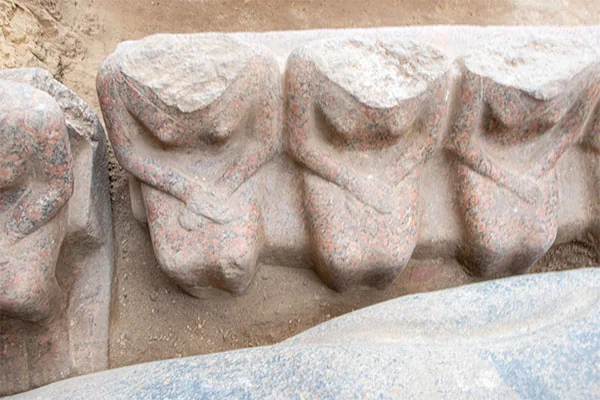Deep within the sprawling Saqqara archaeological site near Cairo, Egypt, a team of archaeologists stumbled upon a mystery disguised as a massive pink granite door. Standing nearly 14 feet tall and almost four feet wide, this “massive false door” had long concealed the resting place of a forgotten prince.
The Egyptian Ministry of Tourism and Antiquities revealed this stunning discovery last month, igniting excitement among historians and Egypt enthusiasts worldwide. Behind the imposing slab lay the tomb of Prince Userefre—also known as Waser Ef Ra—the son of King Userkaf, founder of Egypt’s influential Fifth Dynasty around 2400 B.C.
A Royal Legacy Encased in Stone

The pink granite door was no ordinary barrier. Its surface bore intricate hieroglyphics, proudly proclaiming the prince’s name and a string of impressive titles: “hereditary prince, regional governor of Buto and Nekheb, royal scribe, minister, judge, and chanting priest.” These inscriptions offered a rare, intimate glimpse into the life of a man who held sway over religious, administrative, and regional power.
Beyond the door, the tomb’s chambers held more treasures, statues of King Djoser, his wife, and their ten daughters, as well as a finely carved red granite table listing funerary offerings. This vivid tableau of stone and scripture paints a picture of royal life and death rituals more than three millennia old.
A Unique Cache of Statues Breaks New Ground
Among the most remarkable finds was a grouping of 13 pink granite statues seated on a high-backed bench, unprecedented in Saqqara, the Ministry’s post explained. “To the north of the lintel, a discovery considered the first of its kind in the Saqqara area was made,” it said.
Adding to the mystery, some statues’ heads were elevated higher than the rest, representing the prince’s wives seated centrally. Nearby stood two headless figures and a striking black granite statue, overturned but measuring about 1.35 meters tall.
These statues, silent witnesses of a bygone era underscore the tomb’s importance and the elaborate care lavished on royal burials.
Unveiling Secrets of a Bygone Era

Egyptian Minister of Tourism and Antiquities Sherif Fathy hailed the find as a monumental step forward.
Egyptian Minister of Tourism and Antiquities Sherif Fathy expressed pride in how the tomb “unveil new secrets of this significant historical period in the history of ancient Egyptian civilizatio.”
This revelation adds another chapter to the unfolding story of Egypt’s rich past, following earlier discoveries this year, such as a 3,000-year-old mining complex complete with ancient homes, workshops, and baths, as well as the tomb of an unknown pharaoh unearthed by a University of Pennsylvania archaeologist.
A Door Opens to 3,600 Years of History
For archaeologists, historians, and dreamers alike, this pink granite door is more than stone, it’s a portal to the lives, power struggles, and beliefs of a world long vanished. As experts continue to explore its depths, the tomb of Userefre promises to reshape our understanding of Egypt’s Fifth Dynasty and the intricate lives of its rulers.



